Seven cinereous vultures have just been released in the Iberian Highlands rewilding landscape in Spain, as part of an ongoing reintroduction programme. The restoration of this iconic and ecologically important bird as a breeding species will enhance the health of the landscape, support economic growth, and help to prevent the outbreak of disease.
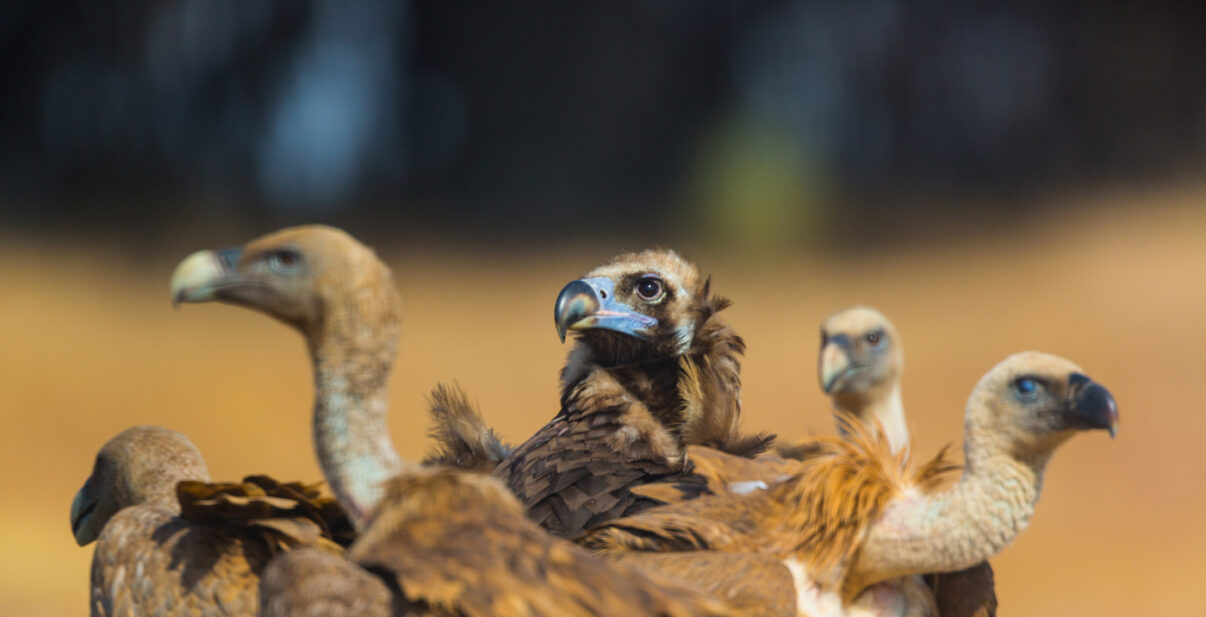
Towards a healthier, more valuable landscape
Seven cinereous (black) vultures have recently been released in the Iberian Highlands rewilding landscape in Spain, as the latest stage in an ongoing reintroduction programme. Having been sourced from wildlife recovery centres across the Castilla-La Mancha region, the birds were housed in a specially built adaptation aviary for seven months prior to being set free. The return of this majestic keystone species to the Iberian Highlands will help to realise the rewilding vision for the landscape.
“Restoring populations of cinereous vultures and other vulture species in the Iberian Highlands will enhance the health and resilience of the local ecosystem,” explains Rewilding Spain team leader Pablo Schapira. “The presence of a diverse range of vulture species will mean that scavenging is carried out as an essential natural process and support the development of more complex food webs. It will also contribute to the growth of nature-based tourism in the area, which can provide much-needed economic and cultural benefits to local communities.”
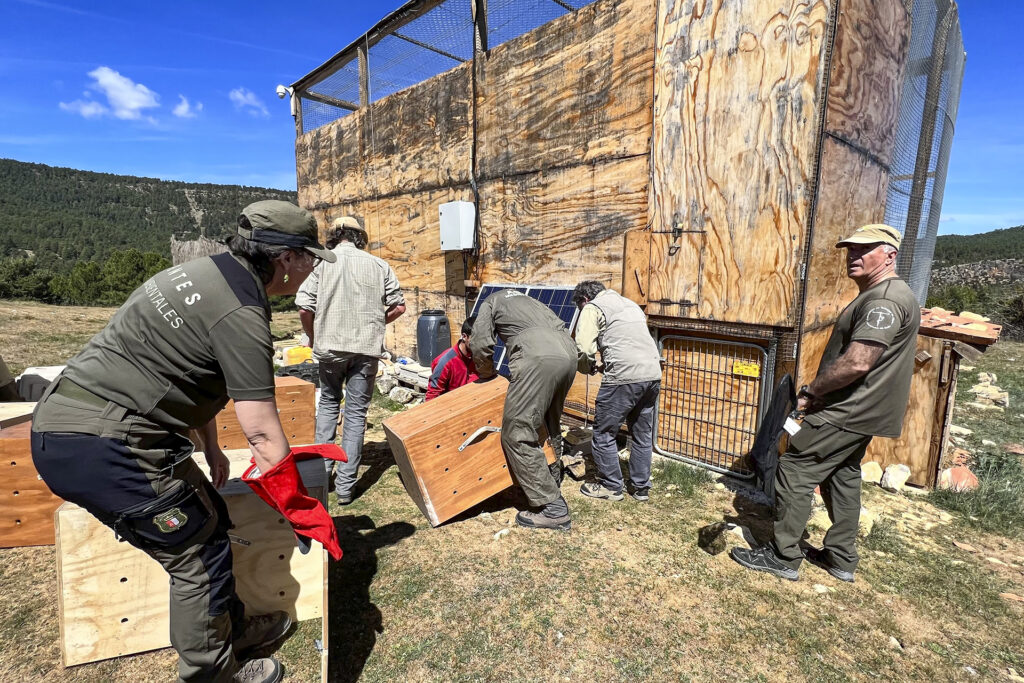
Breeding ambition
The cinereous vulture reintroduction programme, which began in 2020, is run by the Castilla-La Mancha regional government, in collaboration with Spanish NGO Terra Naturalis and Rewilding Spain. Before the latest release, a total of 10 birds had already been reintroduced to the Iberian Highlands landscape.
GPS transmitters fitted to the vultures involved in the programme have revealed that the birds released so far have travelled widely across Spain. However, the majority continue to spend most of their time in the Iberian Highlands. As the local vulture population grows and the species gradually re-establishes itself within the local ecosystem, the birds are expected to form colonies together.
“We are aiming to release a total of between 40 and 50 birds in the area, with the aim of establishing the cinereous vulture as a breeding species here,” explains Jorge Layna, a Terra Naturalis biologist responsible for the programme. “Young vultures, like those released so far, start breeding when they are around four years old. We hope that when this happens it will also help to attract vultures that are dispersing from other colonies across the Iberian Peninsula.”
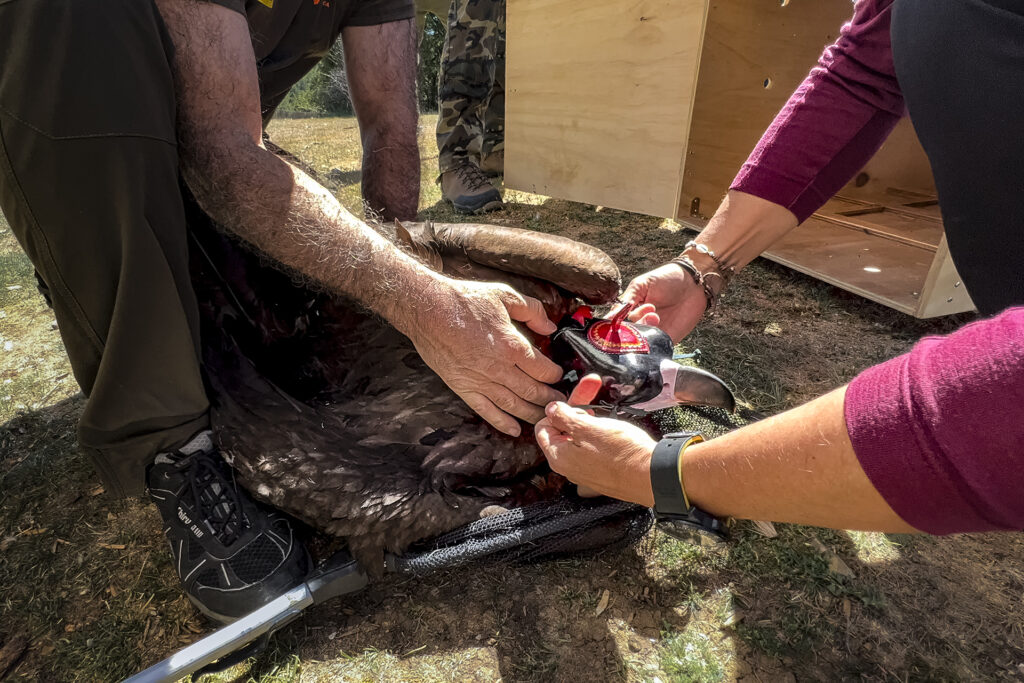
A tentative recovery
As Spain’s largest and most iconic scavenging bird, the cinereous vulture was common in the Iberian Highlands until around 100 years ago. At this point the last resident colonies disappeared as forests in the area were cut down. The creation of new breeding colonies in the Iberian Highlands is key to the conservation of the species, which is considered endangered in the Castilla-La Mancha region (of which the Iberian Highlands rewilding landscape is a small part), where there are 508 registered pairs.
The cinereous vulture was once widespread on the Iberian Peninsula and across Europe, with thousands of birds soaring through the skies. Throughout the twentieth century the species became increasingly scarce, however, with breeding colonies disappearing from many countries. This downward trend was largely driven by habitat loss, mortality from poisoning campaigns against predators such as wolves, reduced availability of food, direct persecution, and human disturbance.
By 1973, the number of cinereous vultures in Spain was down to 2016 pairs. Since then, the species has started to recover – largely due to effective legal protection, the end of persecution and poisoning campaigns, and the implementation of targeted conservation measures – with the population now standing at around 2500 pairs. Despite this growth, however, the population continues to be highly concentrated in a small number of colonies. There are only two in the Castilla-La Mancha region – in Cabañeros and Valle de Alcudia – which are located a significant distance from the Iberian Highlands. This concentration represents a serious risk for the species, as outbreaks of disease and catastrophic wildfire could have a disproportionately negative impact.
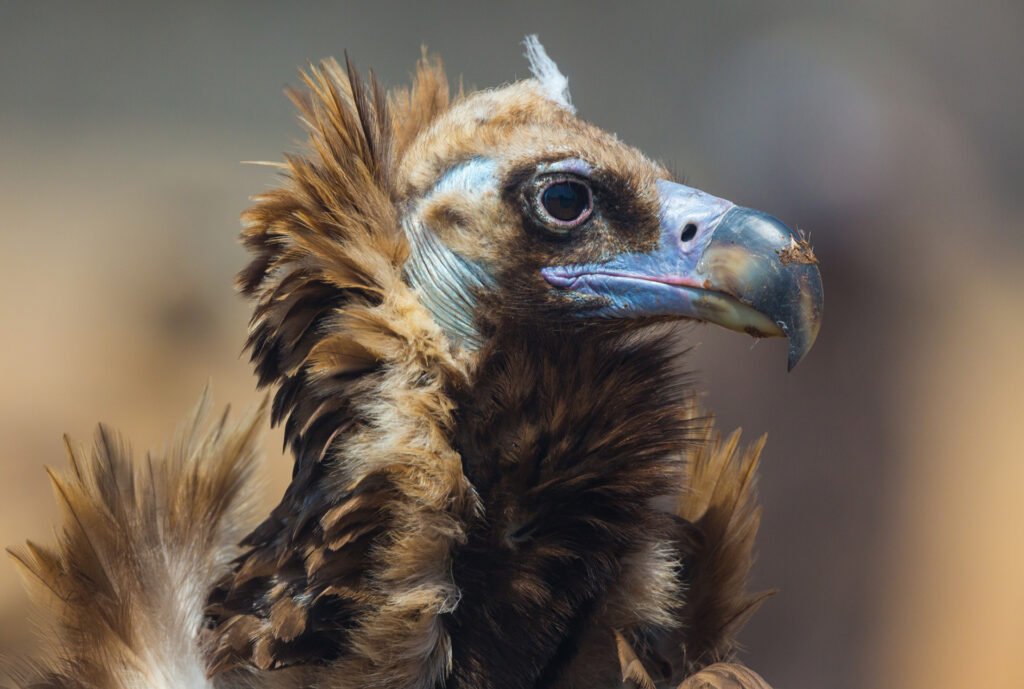
Suitable habitat
Unlike the griffon vulture, which prefers rocky areas, the cinereous vulture nests in the tops of trees, making the species very sensitive to the removal of tree cover. Within the Iberian Highlands rewilding landscape, forests in the Upper Tagus (Alto Tajo) and Cuenca Mountains are protected, which means there is plenty of secure and suitable habitat to support the return of these impressive birds. To encourage the birds to breed, 16 tree-top nesting platforms have been constructed (two with visual lures), while six artificial feeding stations are maintained across the landscape. Some of these are temporary and are connected to the reintroduction programme, with carcasses sourced from livestock farms and hunting areas.
The feeding habits of cinereous vultures ensure there is little competition for food with smaller griffon vultures, which are also resident in the Iberian Highlands landscape. Cinereous vultures prefer smaller carrion and carcass leftovers that their cousins tend to leave. By working in partnership as “nature’s clean up crew”, both species are highly effective at preventing the spread of disease that might otherwise break out if carcasses were left to decompose without consumption by the birds.
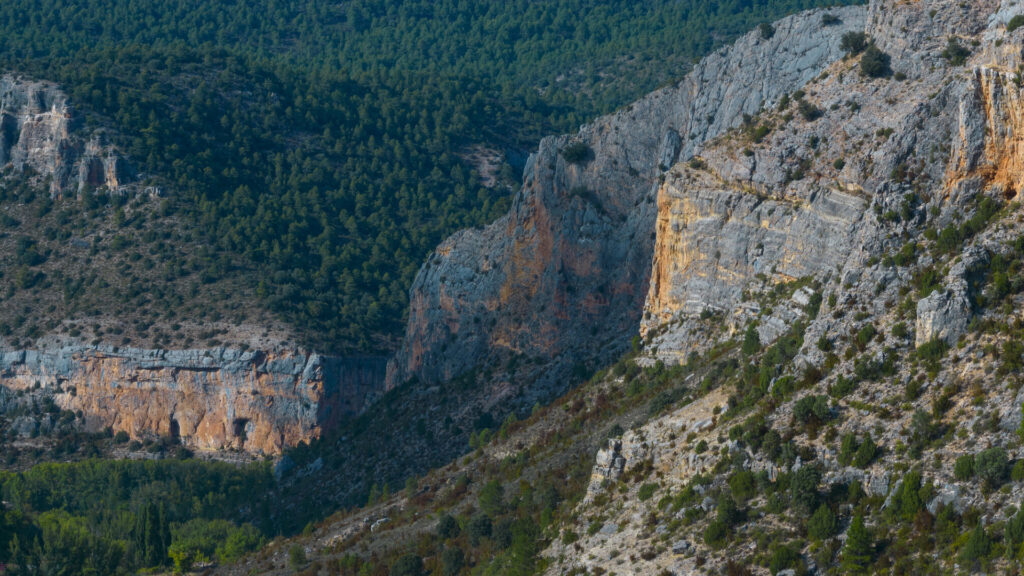
Four in focus
The restoration of a permanent cinereous vulture population in the Iberian Highlands would represent a significant step towards recovering the four vulture species that were formerly resident in the area. With populations of griffon and Egyptian vultures already present, Rewilding Spain is also working with Terra Naturalis and the regional government to bring back bearded vultures.
The participation of Rewilding Spain in the cinereous vulture reintroduction programme is carried out in partnership with Rewilding Europe, and with the financial support of the Endangered Landscapes Programme and the Cartier for Nature Foundation.

